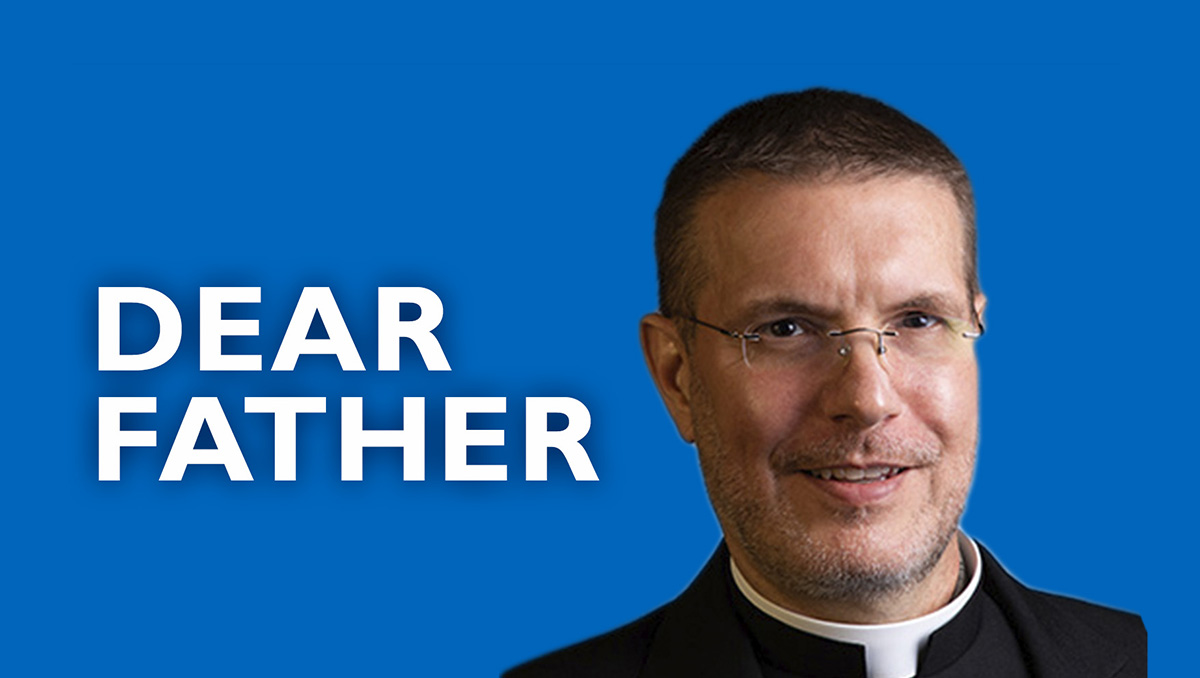SERVE THE LORD WITH GLADNESS | Called to bear, with Mary, the sufferings of others
There’s a way to embrace suffering that brings graces to the world

Dear brothers and sisters in Christ,
We live at the confluence of the Mississippi and Missouri rivers. Few people know better than us the power of a river — the power both for good and for destruction.
In his book, “The Catholic Gentleman,” author Sam Guzman likens suffering to the power of a river: It can overwhelm us with destructive force, or it can be channeled and harnessed for good.
It seems like a torrent of suffering and sorrow has been unleashed on the world these days. How fortunate, then, that we observe the feast of Our Lady of Sorrows this week, on Sept. 15.
The death of Christ — the death of God made man! — unleashed a powerful river of sorrow that might have overwhelmed the world. But that river was channeled through the heart of Mary. Some say this is where she experienced the pains of birth most intensely, becoming the mother of the Church at the foot of the cross. A great grief was channeled through her heart; then she became able to receive the grief of others and to be a source of consolation for them in the midst of their grief.
Mary turned her sorrow into an offering, rather than letting it become a source of bitterness. And because she did so, her sorrow lifted others.
There’s an invitation that’s particularly apt for these days of grief. We have always known as Christians that we’re called to bear the dying of Jesus in our bodies (2 Corinthians 4:10). But there’s something we know as Catholics that the world needs right now: that we are also called to bear, with Mary, the sufferings of others. There’s the suffering in Ukraine and Gaza and other war-torn places; the suffering of Annunciation School in Minneapolis and other places affected by gun violence; the suffering of physical and mental illness that touches so many of our families. Mary — Our Lady of Sorrows — teaches us that there’s a way to bear these sorrows, to channel the river of hurt through our hearts in a way that brings graces rather than destruction to the world.
This is precisely where the movement known as “transhumanism” is both well motivated and ultimately mistaken. It seeks to address and alleviate the suffering of the world. Good! But it seeks to address suffering by offering a path to avoid it and by holding out the promise of living forever in this world. There’s the tragedy: Living forever in this world isn’t a worthy goal for us. It isn’t even possible: This world, after all, will itself come to an end.
Christianity also proposes to address and alleviate the suffering of the world. But Christianity seeks to address it by moving through suffering, not around it. And that movement through suffering is a path to live eternally in a heaven which never ends.
Jesus showed us another way to approach our own suffering. Mary showed us another way to bear the suffering of others. The world needs our witness, these days, to both of these skills.
There’s a way to embrace suffering that brings graces to the world
Subscribe to Read All St. Louis Review Stories
All readers receive 5 stories to read free per month. After that, readers will need to be logged in.
If you are currently receive the St. Louis Review at your home or office, please send your name and address (and subscriber id if you know it) to subscriptions@stlouisreview.com to get your login information.
If you are not currently a subscriber to the St. Louis Review, please contact subscriptions@stlouisreview.com for information on how to subscribe.




